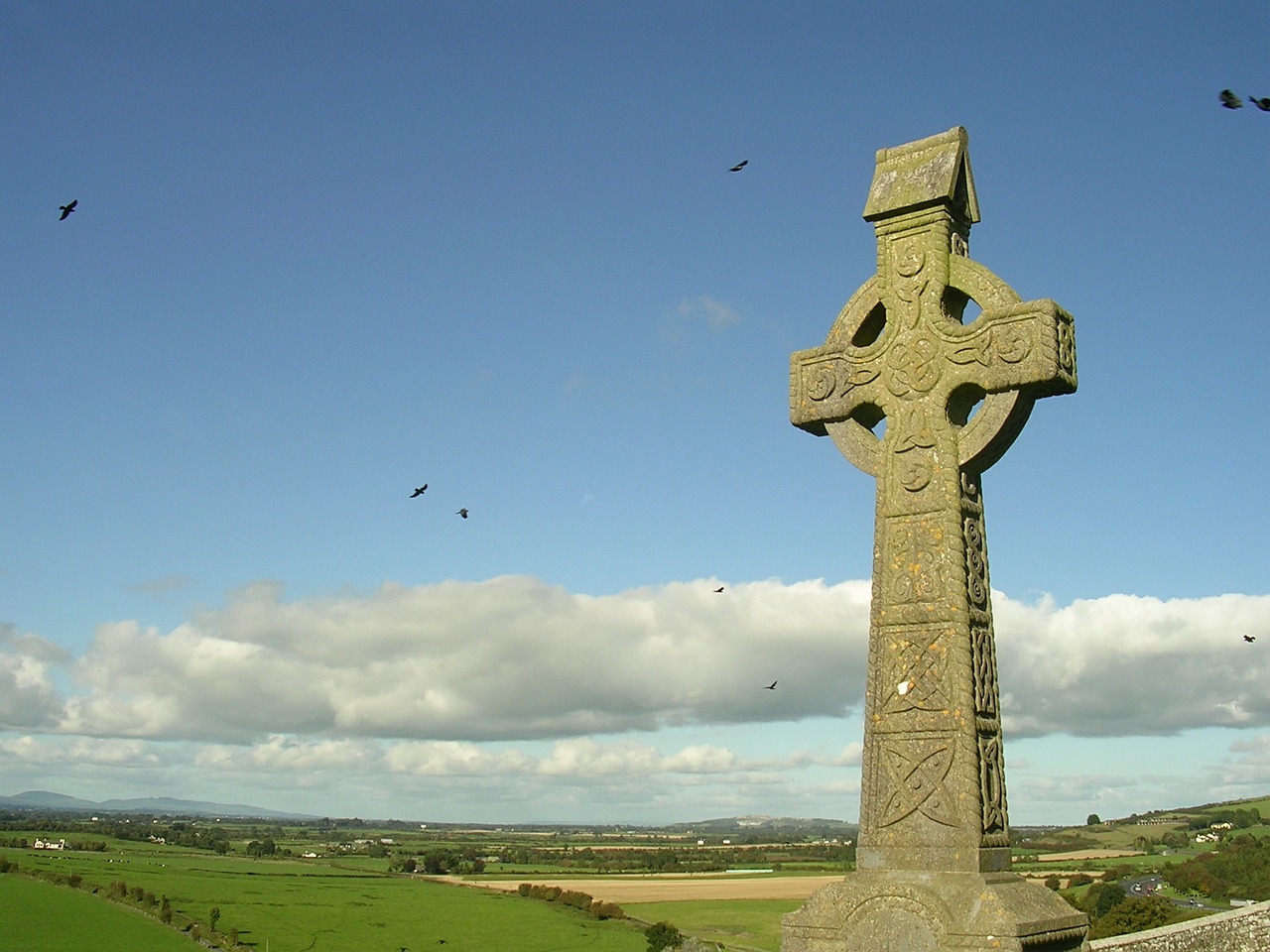The Pre-Christian Faith of Ireland
Relatively little is known about the druidic faith that existed in Ireland prior to Christianity. Druid priests committed their knowledge to memory instead of writing, and much of their practice disappeared with their order. Elements of the old religion, however, can still be found in folklore and legend. Through ritual worship and sacrifice, philosopher-priests prayed to Tuatha Dé Danann gods for protection. The Tuatha Dé Danann were the former rulers of Ireland. The mythic ancestors of the Irish, the Milesians, defeated them for control of the island.
Pre-Christian worship included the sun god Baal, apparently loaned from Phoenician traders. Every first of May, farmers drove their cattle between two bonfires for luck. This tradition continued into the Christian era. The Tuatha Dé Danann survived Christianity as well. hey retreated into their fairy mounds to re-emerge as fallen angels, demons, and sprites.[1]
Saint Patrick and the Saints of Ireland
Saint Patrick is famous for bringing Christianity to Ireland, but he was likely preceded by a Gaulish bishop named Palladius. Palladius preached in Ireland, but he was soon banished by the King of Leinster. Patricius, the son of a Roman tax collector in Britain, found greater success a few years later. According to his memoirs, he met resistance from the druids, but many of the ruling classes proved willing converts. His new devotees set to work building monasteries and churches on rocky islands, devoting themselves to scripture.[2][3]
Monasticism and Church Reform in Ireland
The other patron saints of Ireland are Brigid and Columba. Saint Brigid appears to be a Tuatha de Danann goddess, also Brigid, combined with a powerful abbess. Saint Columba founded a large network of monasteries from the island of Iona.[4] His monasteries, and others like them, became centers of art and learning after the decline of Rome. Monks prayed for their communities, established hospitals for the sick, and transcribed holy texts as manuscripts.
The isolation of Irish Christianity caused it to depart at times from the papal standard. Bishops held little power in Ireland compared to the rest of Europe. Monks in certain communities were allowed to keep wives and have children. The position of abbot was often a hereditary one. This "Celtic Christianity" was a major motivation behind King Henry II's Anglo-Norman invasion of 1169. While Anglo-Irish lords struggled to control Gaelic Ireland, they succeeded in reducing the power of its monasteries.[5]
Modern Worship in Ireland
When King Henry VIII broke with Rome to form the Church of England, he created a divide that would lead to centuries of bloodshed and oppression in Ireland. Protestants enjoyed greater privileges than the largely Catholic Irish, and at times the roles reverse. Religion and politics soon became hopelessly entangled in a series of rebellions.
After Ireland's war for independence, violence continued in Northern Ireland through the late 20th century. The Troubles formally ended in 1998, but their impact can still be seen and felt along the borders of the two nations. Today, the majority of Ireland's population is Roman Catholic.[6]
Bibliography
Patrick W. Joyce, A Smaller Social History of Ancient Ireland (London, NY, and Bombay: Longmans, Green, & Co., 1906), 117-128.
Thomas Bartlett, Ireland: A History (Cambridge: Cambridge Univ. Press, 2011), 3-4.
Patrick, The Confession of St. Patrick, trans. Thomas Olden (Dublin: McGlashan, 1853).
John O'Hanlon, Lives of the Irish Saints (Dublin: J. Duffy & Sons, 1875), 593-596.
Edel Bhreathnach and Raghnall Ó Floinn, "Ireland: Culture and Society," in A Companion to Britain in the Later Middle Ages, S. H. Rigby, ed. (Chichester, U.K.: Wiley-Blackwell, 2009), 561-572.
Peter Cottrell, The Anglo-Irish War: The Troubles of 1913-1922 (Oxford: Osprey, 2006).
About TOTA
TOTA.world provides cultural information and sharing across the world to help you explore your Family’s Cultural History and create deep connections with the lives and cultures of your ancestors.


